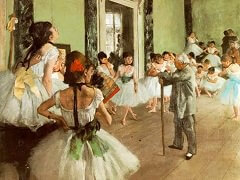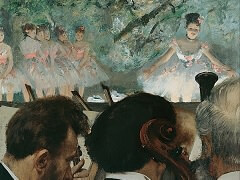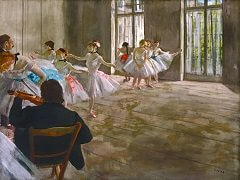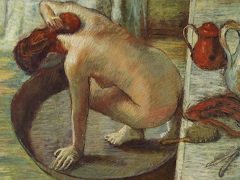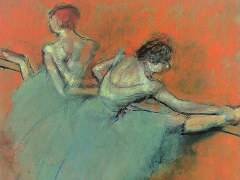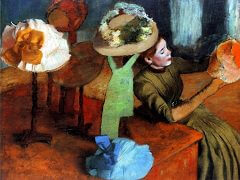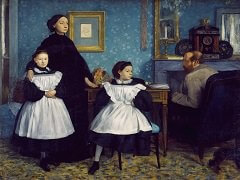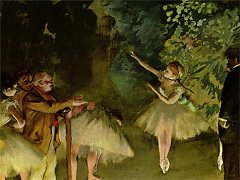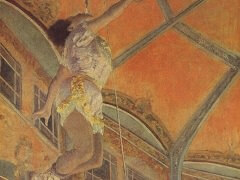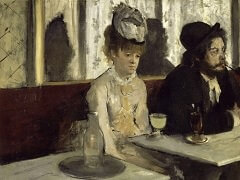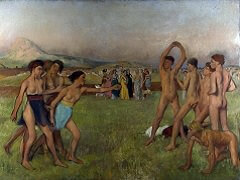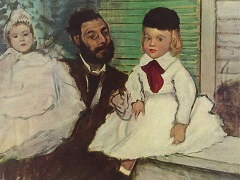Place de la Concorde, 1875 by Edgar Degas

Place de la Concorde was not commissioned and shows the artist's friends, writer Daniel Halevy and the artist Ludovic-Napoleon Lepic with his daughters. The artist has them participating in a casual scene at the famous Parisian square. Degas never painted any other picture with a similar composition. In need of money he sold his masterpiece to Vicomte Ludovic-Napoleon Lepic, and the painting remained unknown until the end of the century.
Place de la Concorde seems to draw from the operations of popular illustration more than other Impressionist paintings - in its willingness to make the politics of form a visible, rather than suppressed, text - even if it does so only obliquely, through placement, overlap, and erasure. As was first noted by Kirk Varnedoe, the black top hat of Viscount Ludovic-Napoleon Lepic...covers James Pradier's late 1830s sculpture of the city of Strasbourg, so recently lost to the Prussians, along with Alsace and Lorraine. The statue functioned as THE site of national mourning for Parisians during the Siege of Strasbourg in September 1870, the long and difficult Siege of Paris that winter, and especially after the annexation of Alsace-Lorraine by the newly founded German Kaiserreich in the spring of 1871. It was permanently overwhelmed with wreaths, garlands, and flags, in a gesture uncannily echoing Degas's placement of Lepic's hat.
Yet it has escaped observation how profoundly the hat marries other elements in the painting with similar political resonances: the accentuations of right and left; the tricolor bowtie of the figure on the left; Lepic's red chest decoration that looks like the ribbon of the Legion d'Honneur. In the largely muted monochrome of the painting, these elements of bright color...stand out dramatically; they are meant to be noticed. The composition and sartorial choices are key to a full sociohistoric reading of the painting. ...Reading Degas's highly staged compositional devices from the viewpoint of its audience in about 1875, however, uncovers a range of new meanings for the painting.



